Bicycle, also called a bike, is a pedal-powered vehicle with two wheels set on a frame, one behind the other. The rider powers the bicycle by pushing two pedals around in a circle. Unicycles, tricycles, and other pedal-powered vehicles are often loosely grouped with bicycles. People all over the world use bicycles for transportation, recreation, and exercise.
How a bicycle works
The rider uses the handlebar to steer the bicycle. When the rider pushes the pedals, they turn a crank. The crank connects to one or more sprockets (toothed wheels) called chainrings. A chain or belt fits around the chainring and extends to a smaller sprocket, called a cog, on the rear wheel. As the front sprocket turns, it moves the chain. The moving chain turns the cog, which turns the rear wheel. This action drives the bicycle forward. A few bicycles make use of a drive shaft, rather than a chain, to transmit power from the crank to the rear wheel.

Gears.
Different sized sprockets may be used in combinations called gears. Different gears are better for riding in different conditions. Changing to a lower gear, for example, makes it easier to pedal but causes the wheels to turn at a slower rate. Low gears are useful for pedaling uphill or against the wind. High gears produce greater speed, especially when pedaling downhill or before a wind.
Brakes.
Many bicycles have caliper brakes on both wheels. Caliper brakes stop the bike by pressing two brake pads against the rim of the wheel. Mountain bikes or bikes meant to be ridden in rainy conditions often have disc brakes. Disc brakes stop the bike by pressing brake pads against a flat metal ring—the disc—connected to the center of the wheel. The rider operates caliper or disc brakes by squeezing levers on the handlebar. Some bicycles have coaster brakes, which the rider operates by pushing backward on the pedals.
Why people ride bicycles
A bicycle is useful for many types of trips, such as traveling to work or school, running errands, or visiting friends. For many people, bicycles are an attractive alternative to automobile transportation. Many cities promote bicycling as a means to reduce automobile traffic and air pollution. People also ride bikes for fun, exercise, or sport. Youngsters often get around by bicycle before they reach driving age.
Transportation.
Bicycles are relatively inexpensive to own and maintain, especially compared with automobiles. Bicycles do not require much space for parking or storage. They do not need fuel to run, and they have little negative impact on the environment. In many towns and cities, people can ride bicycles on dedicated paths or in special lanes on streets. All of these factors make bicycling a good transportation option for many purposes.

Some cities offer bicycle-sharing or “bike share” programs as an alternative to bicycle ownership. Such cities have stations where a person can rent a bike for a few minutes or a few hours. The bike can be returned at any bicycle-sharing station in the city, so the rider does not need to make a return trip. Bicycle-sharing programs may offer more convenience for riders who do not wish to maintain or store their own bicycles.
Recreation, exercise, and sport.
Bicycling is also popular in a variety of recreation and sporting uses. Many people bicycle for exercise, riding for the physical effort rather than to reach any particular destination. Bicycles are used in several sports, including mountain biking and road racing. BMX (bicycle motocross) involves racing bikes on dirt tracks or performing stunts from ramps, ledges, or flat ground. Cyclocross is a form of racing on courses that run through various obstacles and different kinds of natural terrain. Certain styles of bicycles are particularly suited for various sporting activities.
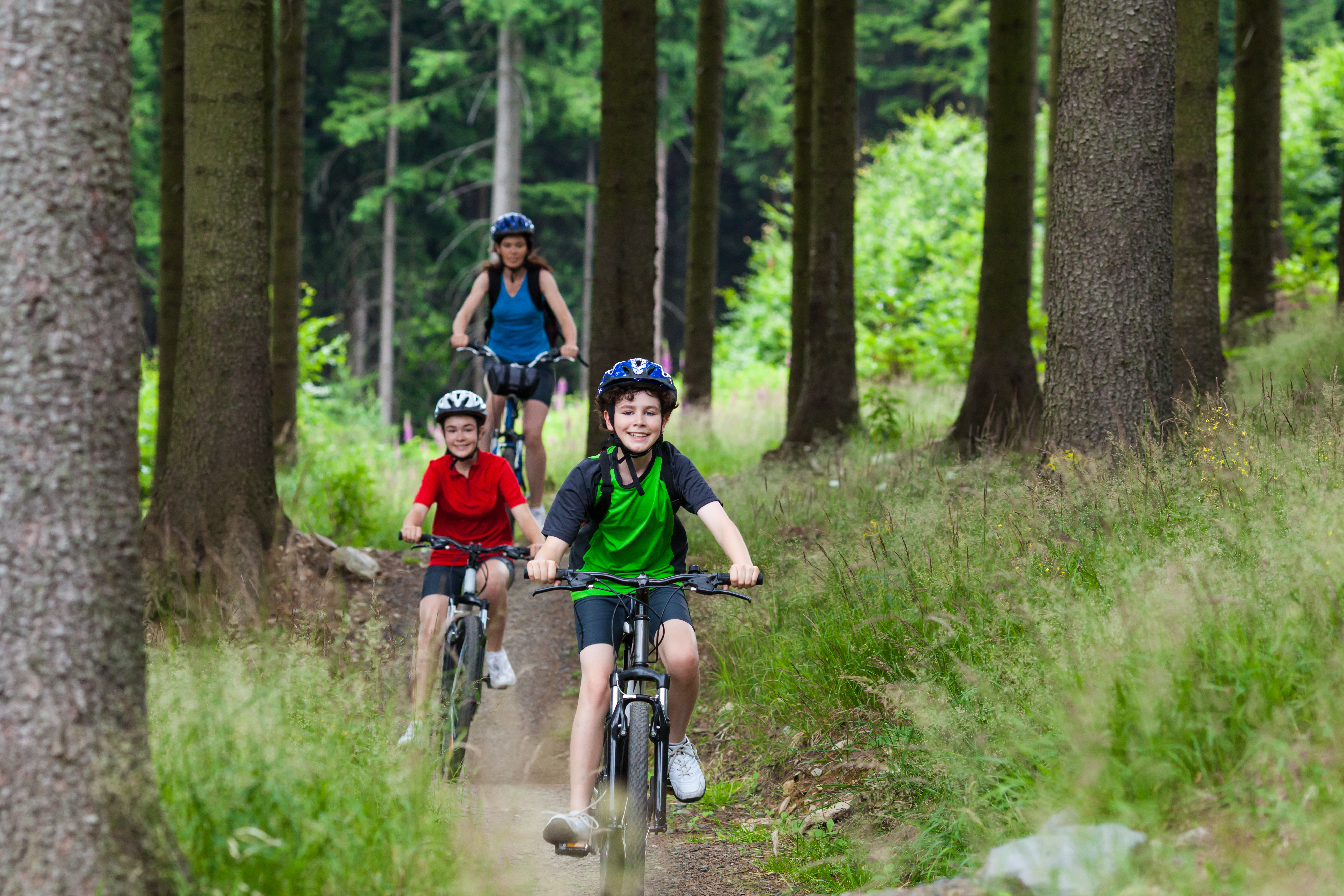
Kinds of bicycles
Bicycles come in many forms and styles, which fulfill different needs and functions. For example, bikes with wider tires work well on dirt or gravel, while those with narrow tires are faster on paved roads. A bike’s frame may be made of steel, aluminum, titanium, or a lightweight material called carbon fiber. The frame material helps determine the bike’s weight, durability, and cost and the smoothness of the ride. The shape and style of the frame—known as its geometry—also affects the ride. For example, lower handlebars enable a rider to adopt a more streamlined posture, reducing wind resistance. A more upright position can be more comfortable for many riders and make it easier to navigate busy streets. There is no right or wrong bicycle design, only different uses and preferences.
Mountain bikes
have sturdy frames, flat handlebars, and wide, knobby tires. These features make them suitable for rides over rough terrain. Some even have front and rear suspensions (spring systems) to cushion against bumps. Mountain bikes usually have gear systems that make it easier to ride up and down trails. 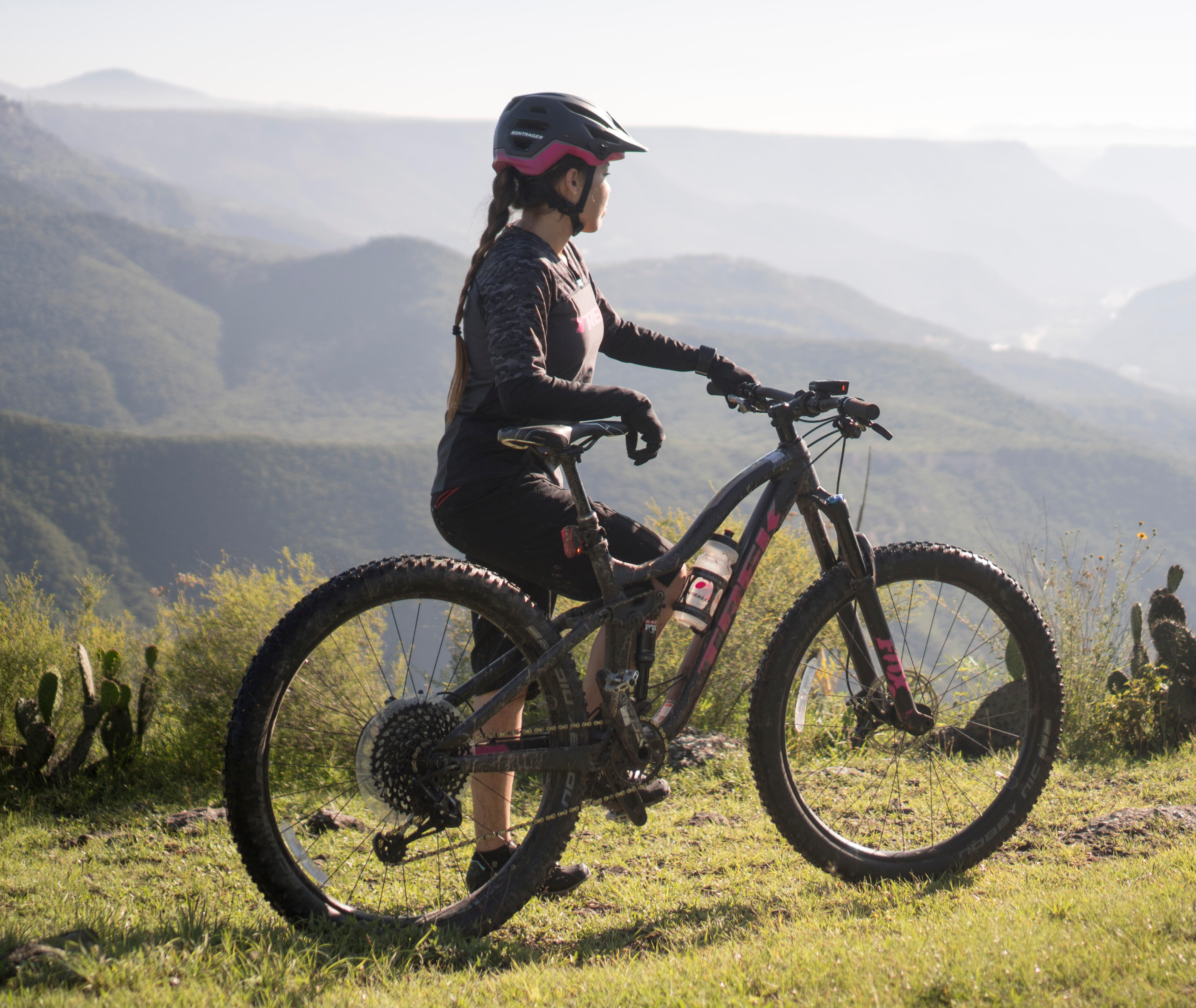
Road bikes
are made for riding on paved surfaces. They have narrow tires and curved or “drop” handlebars that put the rider in a streamlined posture. There are several major types of road bikes. Road racers often have frames made of carbon fiber. Touring bikes have long wheelbases that add stability for carrying objects, such as camping gear or groceries, in bags called panniers << PAN ee uhrz >>. 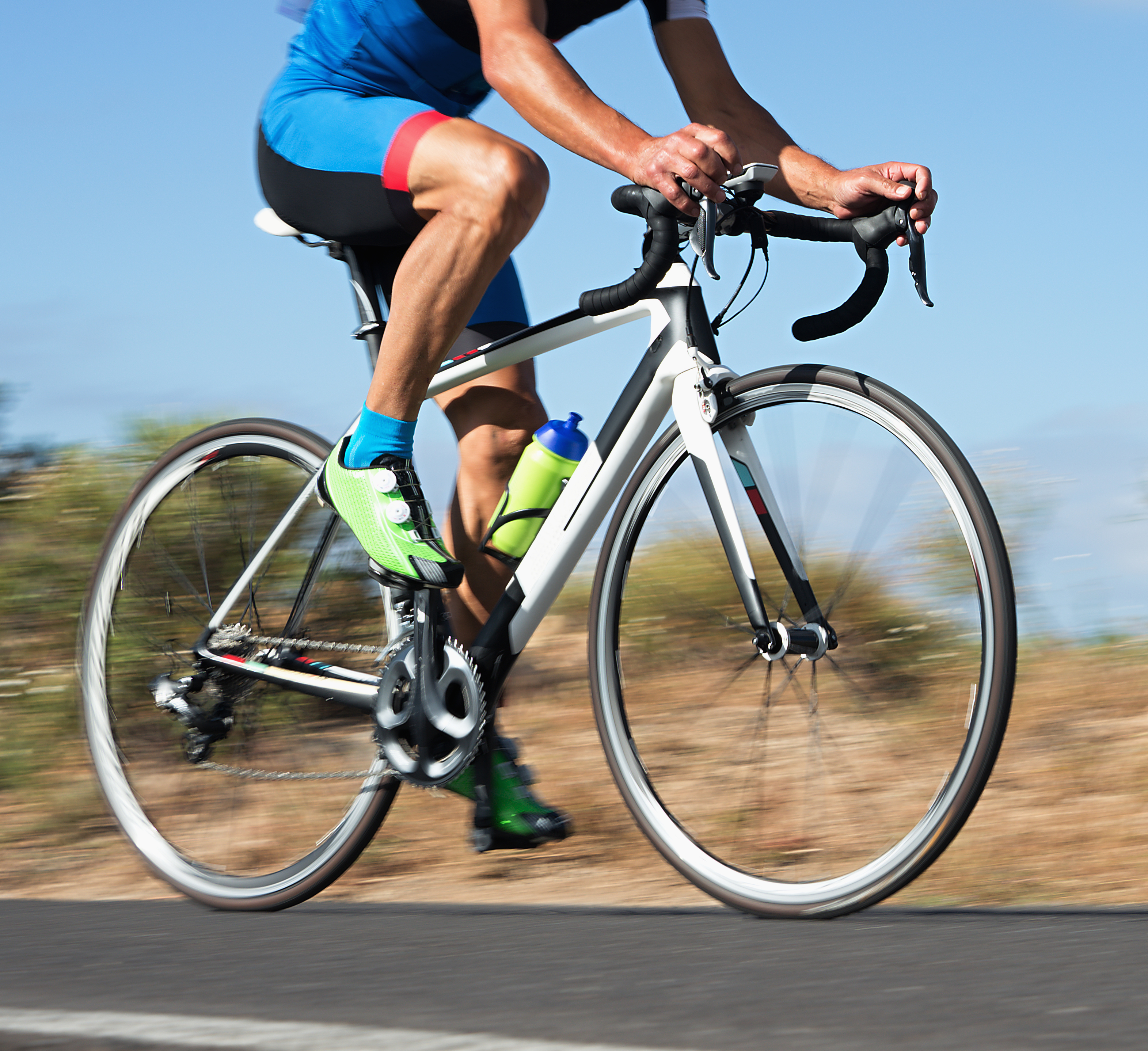
Hybrids and city bikes
are designed for everyday riding. A hybrid is so named because it combines features of a mountain bike and a road bike. Many people ride hybrids or city bikes to work or school. The rider usually sits upright on these bikes. This position is more comfortable and gives the rider a better view when riding in street traffic. Hybrid bikes have various features, such as fenders, racks, and lights, that make daily riding safer and more convenient.
E-bikes,
or electric bikes, use an electric motor to assist the rider in pedaling. These motors are powered by a rechargeable battery. Some e-bikes add power only when the rider pedals the bike. Other e-bikes can also provide power when the rider does not pedal the bike. Countries have different laws for how fast an e-bike can go. When the rider reaches the e-bikes’s maximum speed, the motor stops adding power. Riders can travel faster than the maximum speed, but only by using their own power while pedaling. 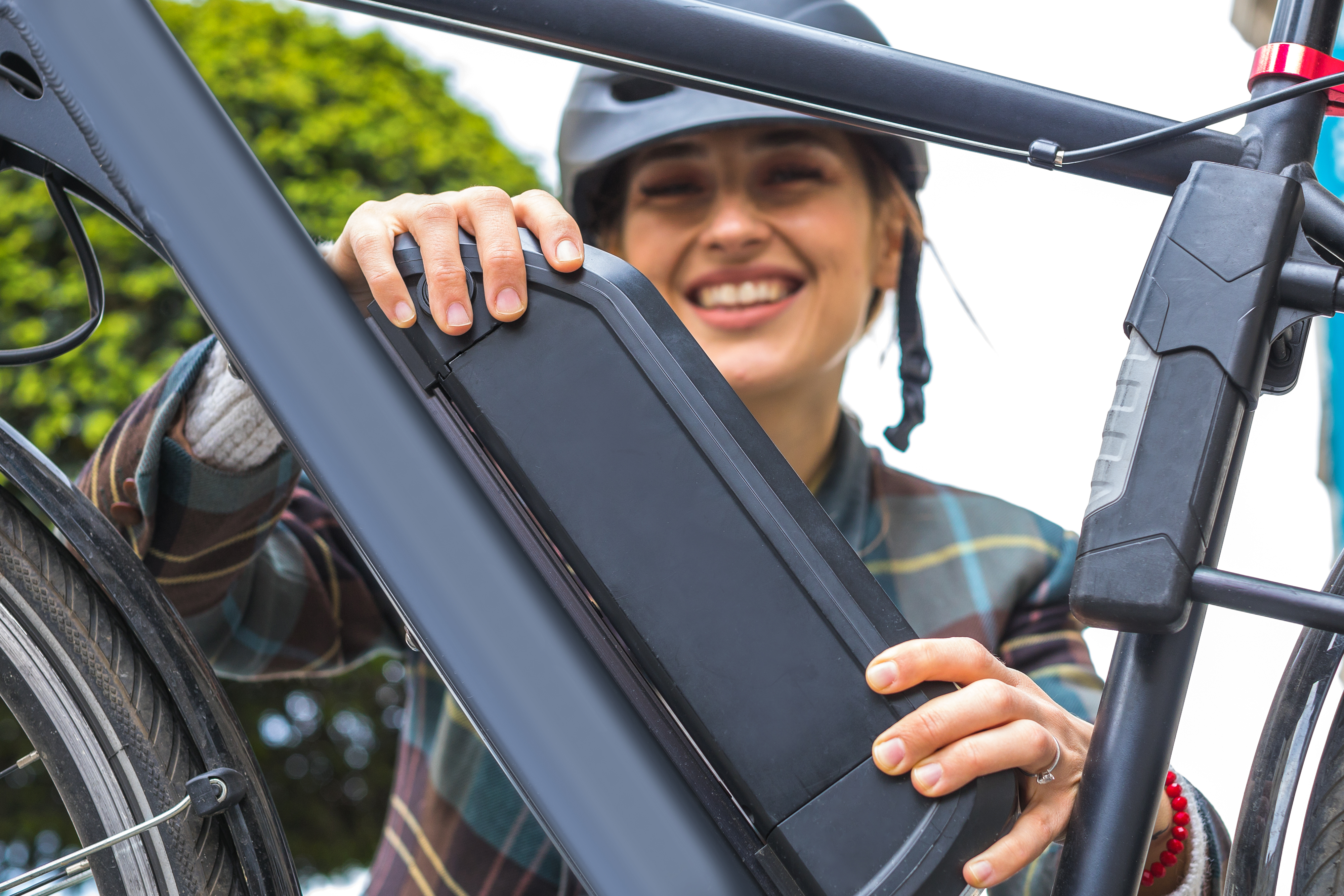
Handbikes,
or handcycles, are powered by pedals turned by hand. Most handbikes have two wheels in the back of the bike and one wheel in the front. Handbikes are often used by people who cannot use their legs. 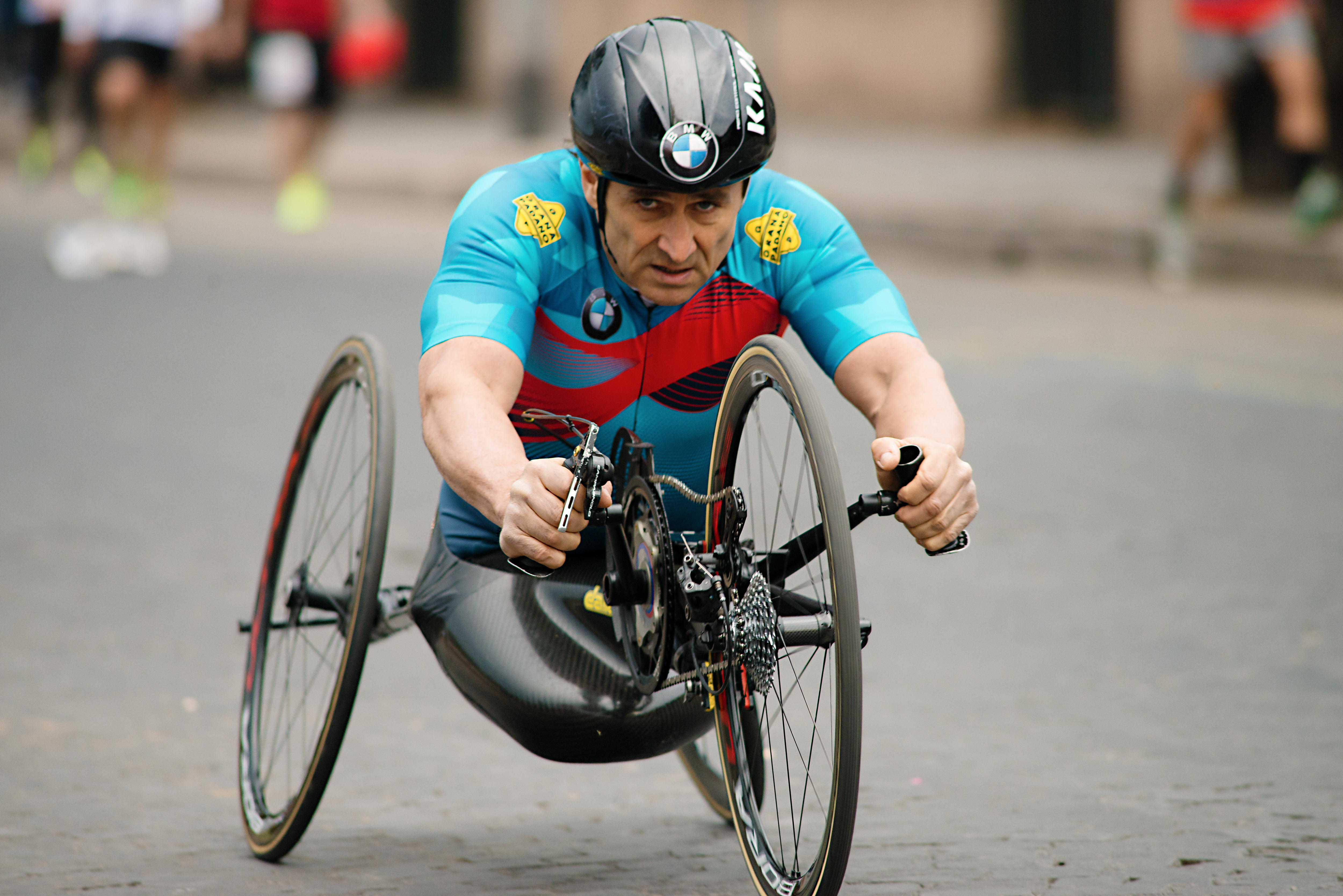
Specialty bicycles
include many styles of bicycles that do not fit in the other categories. The tandem carries two riders, one behind the other. On a recumbent, the rider leans backward and pedals with the legs stretched forward. BMX bikes are designed for racing on dirt tracks, usually with ramps and jumps. Freestyle bikes have small frames that make it easier for the rider to perform tricks. 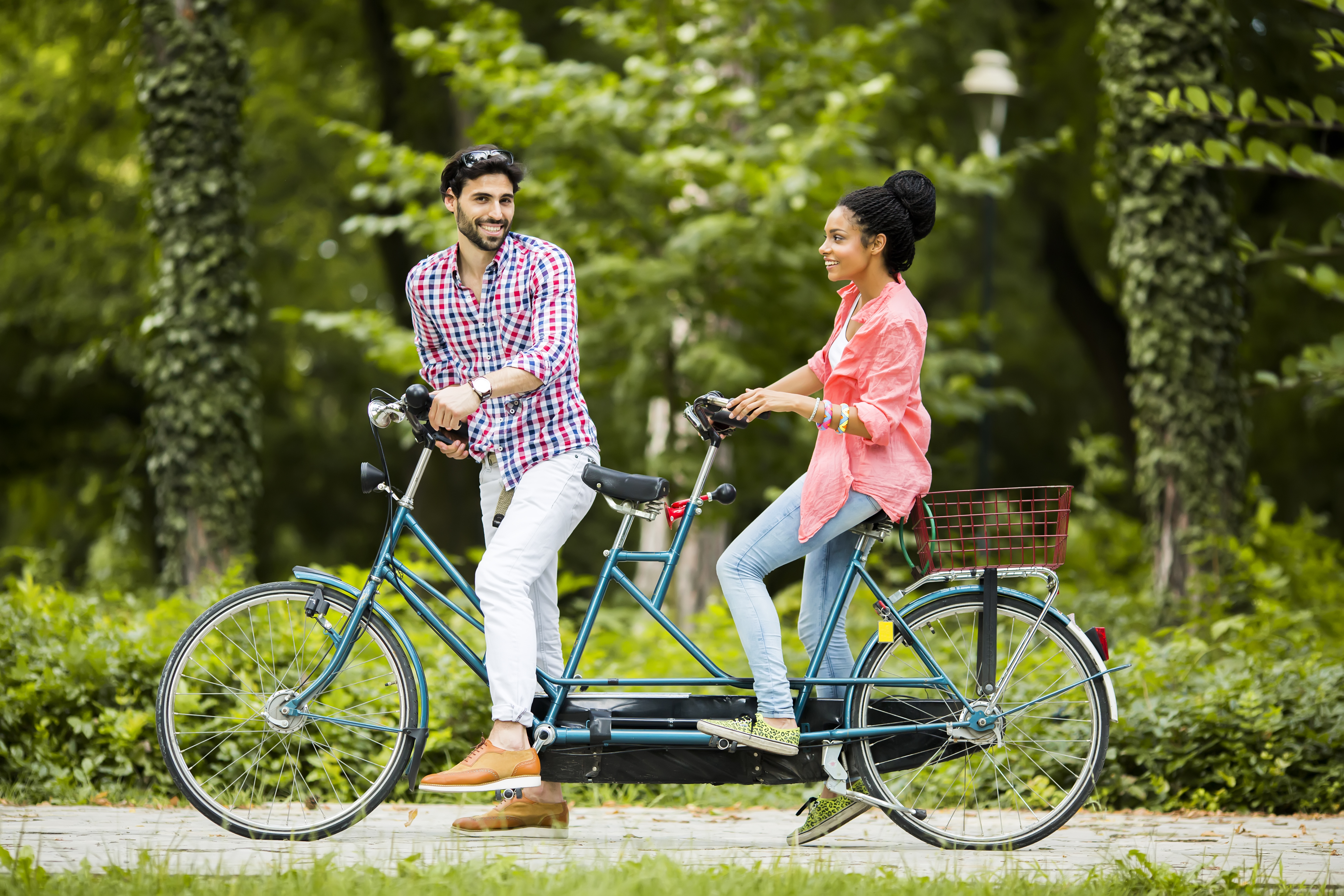
Bicycle care and safety
In many countries, bicycles must be manufactured to meet certain safety standards. In addition, bicyclists can make use of special equipment to help ensure safety. Wearing a helmet can reduce or prevent head injuries if the bicyclist falls. Using a front and rear light and reflectors makes the bicyclist more visible to drivers, pedestrians, and other bicyclists. Each tire should be inflated to the recommended air pressure, which is printed on the side wall of the tire. Proper inflation helps the tires last longer and makes riding easier and more comfortable. The brakes and gears should have enough grease to work easily. A bell or horn can be used to warn pedestrians of the bicyclist’s approach.
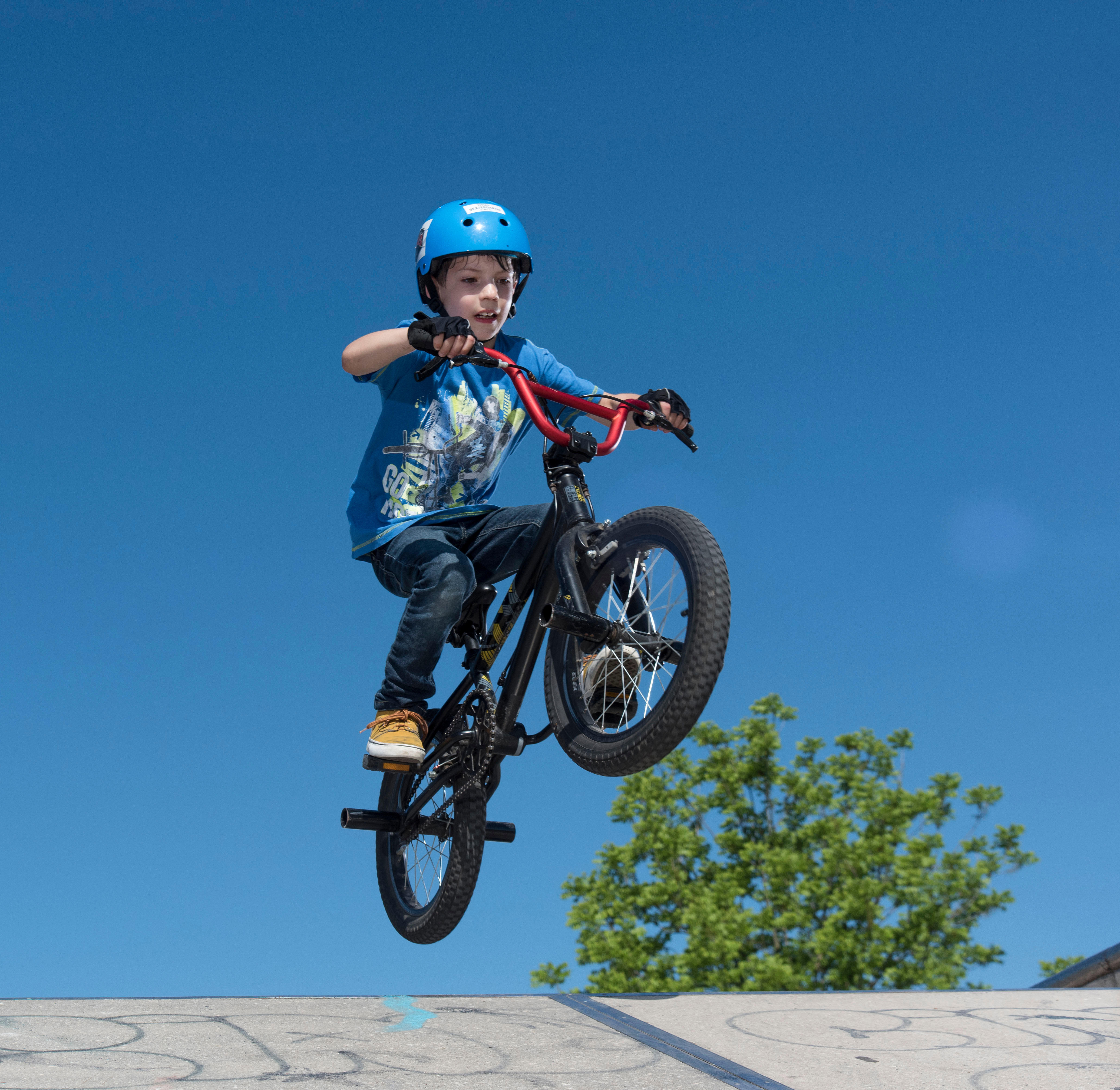
Bicycle riders should obey traffic laws and ride with courtesy. Bicyclists should signal when slowing, stopping, or turning. When riding in the street, bicyclists should ride in the same direction as automobile traffic. In many situations, bicyclists should stay close to the edge of the road. Sometimes, however, it is safer to take the lane—that is, ride in line with automobile traffic—to avoid parked cars, debris in the gutter, or other obstacles. In many cities, adult bicyclists are required to ride on the road, rather than on the sidewalk. However, young children are typically allowed to ride bikes on sidewalks.
It is not safe to carry passengers on a bicycle built for a single rider. Bicyclists should never hold on to a motor vehicle. Racing and stunts should only be done on specialized tracks or during specialized events.
History
The forerunner of the modern bicycle was invented by Baron Karl von Drais of Germany. In 1817, he connected two wagon wheels in a line and added a steering bar for the front wheel. A rider would put one leg on each side, run their feet along the ground, and coast along flat roads and down hills. The baron called his invention a velocipede (fast foot, in Latin) and a Laufmaschine (running machine, in German). This forerunner to the bicycle is also known as the draisine << dray ZEEN >> or draisienne << dray zee EHN >>, for the baron’s last name.
Early bicycles.
By 1866, the first confirmed pedal-powered bicycle was created in the shop of Pierre Michaux, a French blacksmith. Either Michaux or one of his workers attached pedals to the front wheel of a draisine. Such bicycles are sometimes called “boneshakers” because the ride was so rough. Pierre Lallement, who had worked as a mechanic in Michaux’s shop, took out the first U.S. patent on a pedal bicycle later that year.
Inventors soon realized that because each turn of the pedals turned the front wheel once, it was more efficient to make that wheel larger. Around the 1870’s, a type of bicycle called the high-wheeler, ordinary, or penny-farthing took advantage of this fact. It had a huge front wheel and a small rear wheel. The front wheel of these bicycles was up to 5 feet (1.5 meters) high. Because these bikes were so tall, they had a high center of gravity, making them unstable. Riders crashed often, especially when riding down hills.
Modern bicycles.
About 1885, J. K. Starley, an English bicycle manufacturer, produced the first commercially successful safety bicycle. This bicycle had wheels of equal size, which made it easier—and safer—to ride than a high-wheeler. Early bicycles had solid tires made of iron or rubber. By 1890, wheels made of air-filled rubber tires had replaced solid wheels, making riding more comfortable.
By the late 1800’s, millions of people rode bicycles. But during the early 1900’s, the rapid development of the automobile caused many people to lose interest in bicycling.
In the 1960’s, activists in the city of Amsterdam attempted to start the first bicycle-sharing program, called Witte Fietsen (Dutch for White Bikes). The activists distributed white-painted bicycles for public use, but the program failed because most of the bikes were confiscated by police, damaged, or stolen. By the 2000’s, however, the development of electronic payment and tracking systems had made bicycle-sharing programs more feasible. Meanwhile, many cities created bike paths and bike lanes to encourage bicycling, helping to reverse its decline.
